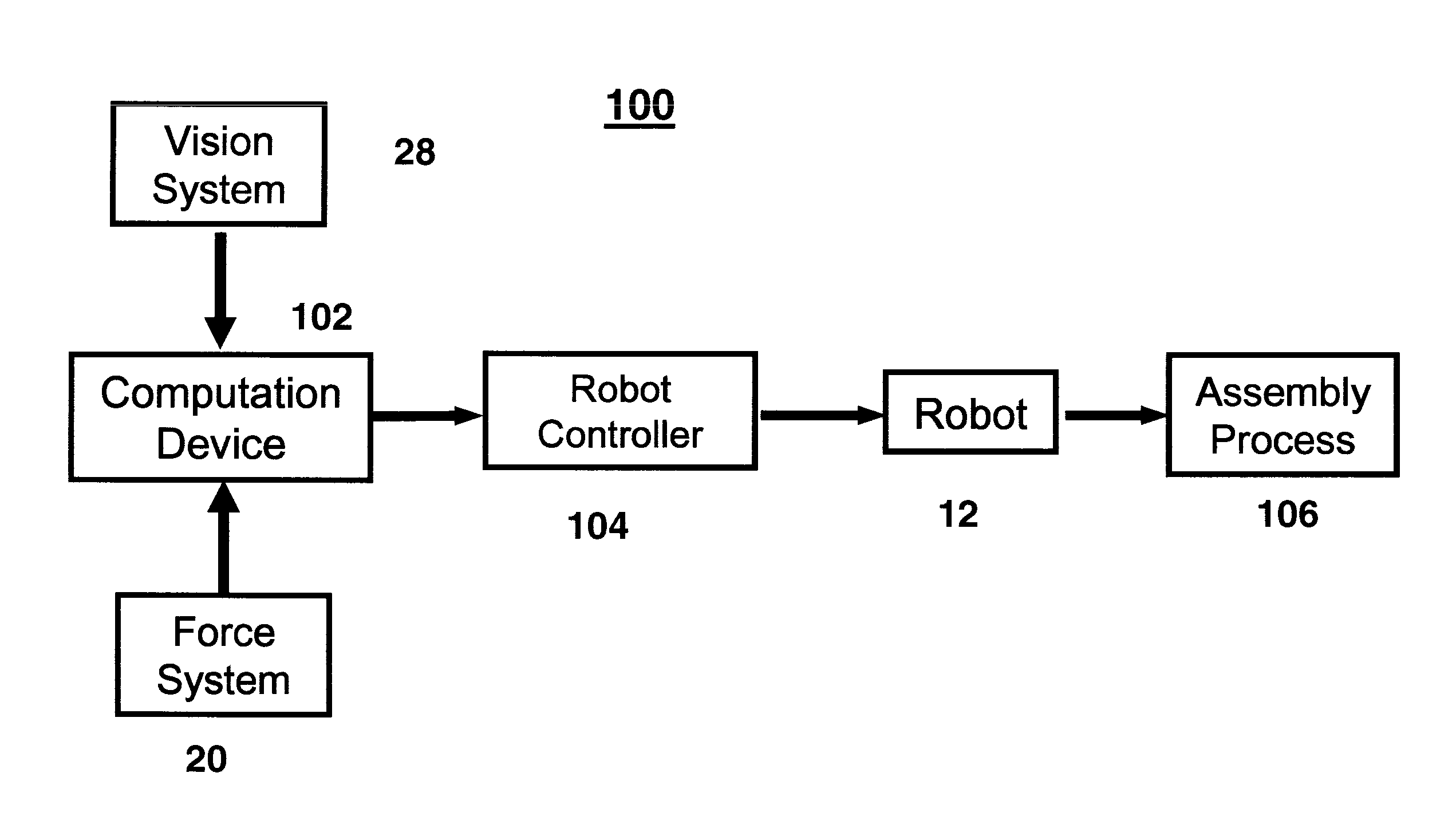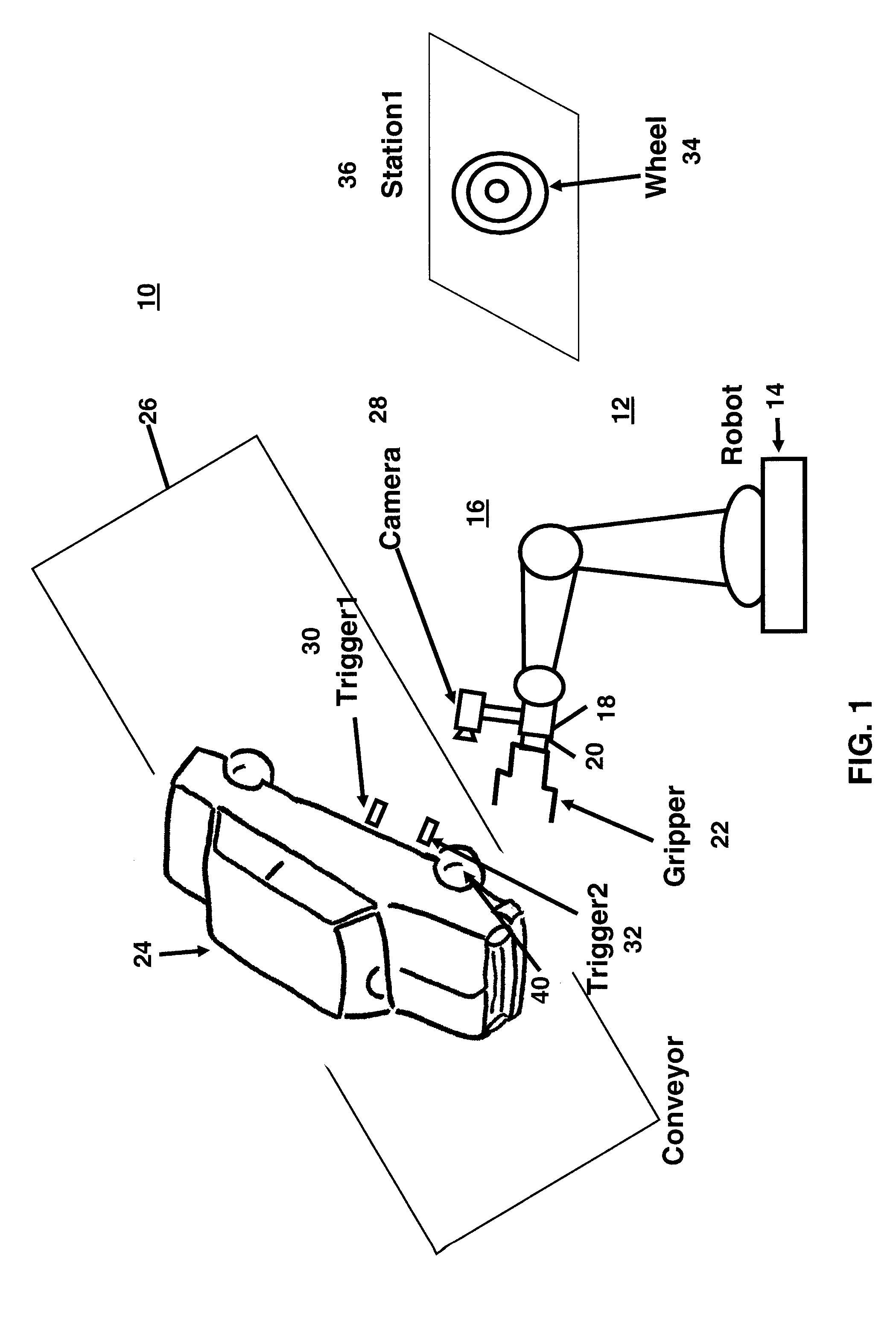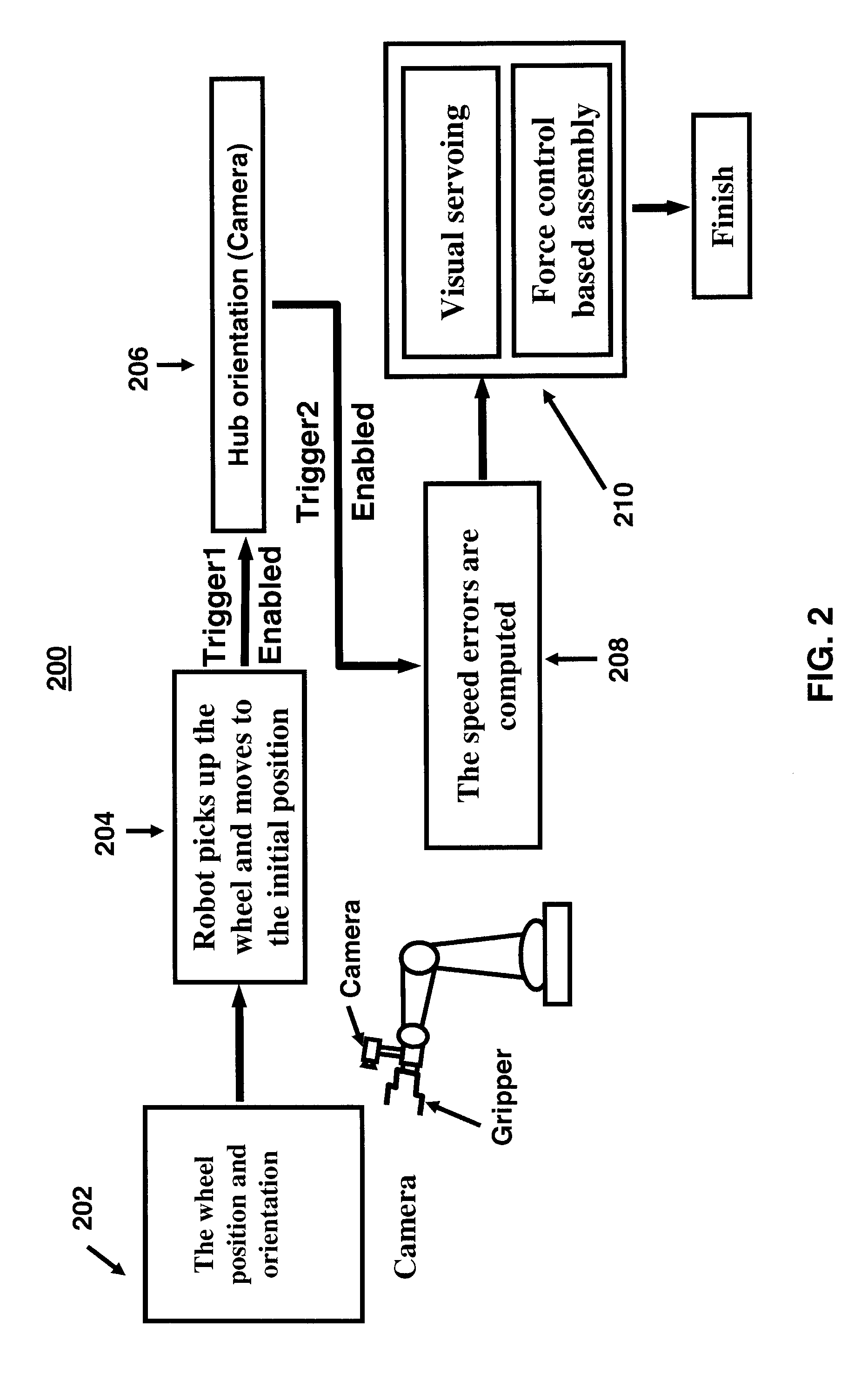Robot parts assembly on a workpiece moving on an assembly line
a technology for assembly lines and workpieces, applied in the direction of programmed manipulators, programme control, instruments, etc., can solve the problems of increasing the number and complexity of assembly tasks performed by industrial robots, saving huge amounts of time and resources, and difficult for conventional industrial robots to adapt to any sort of chang
- Summary
- Abstract
- Description
- Claims
- Application Information
AI Technical Summary
Problems solved by technology
Method used
Image
Examples
Embodiment Construction
[0032]There is described herein a method and apparatus for controlling an industrial robot to perform the assembly of a part to a workpiece based on the synergistic combination of vision, force and position as the feedback information to control the robot motion while the workpiece is moving randomly. The speed errors are computed and the speed of the robot is controlled such that the tool that holds the part to be assembled to the moving workpiece tracks the motion of the randomly moving workpiece. A single camera with simple calibration combined with force control is used. As is described in more detail below, force control is applied to control the motion of the robotic system to perform the assembly task on the randomly moving workpiece.
[0033]The method and apparatus is described below, by way of example and not of limitation, in connection with the process of loading a wheel on the hub of a motor vehicle moving on an assembly line. As is described below, in this example:
[0034]1...
PUM
 Login to View More
Login to View More Abstract
Description
Claims
Application Information
 Login to View More
Login to View More - R&D
- Intellectual Property
- Life Sciences
- Materials
- Tech Scout
- Unparalleled Data Quality
- Higher Quality Content
- 60% Fewer Hallucinations
Browse by: Latest US Patents, China's latest patents, Technical Efficacy Thesaurus, Application Domain, Technology Topic, Popular Technical Reports.
© 2025 PatSnap. All rights reserved.Legal|Privacy policy|Modern Slavery Act Transparency Statement|Sitemap|About US| Contact US: help@patsnap.com



